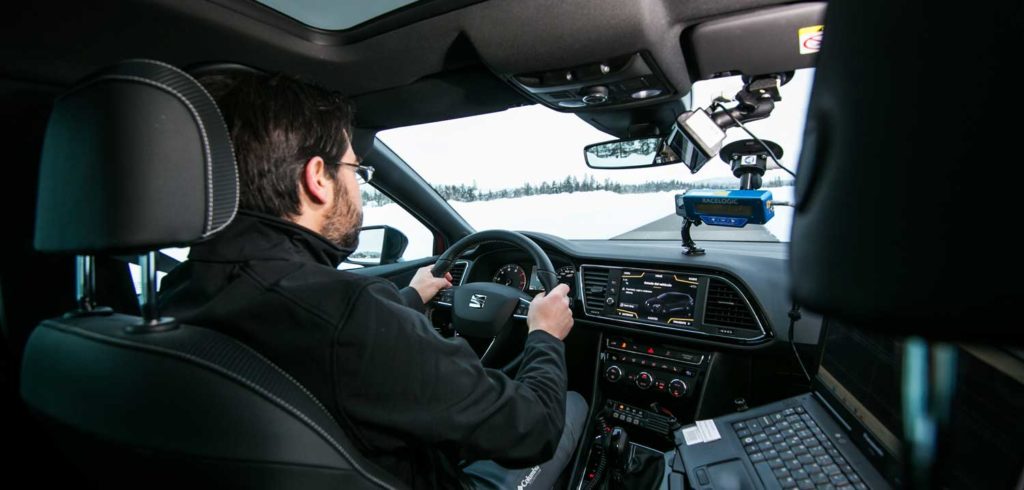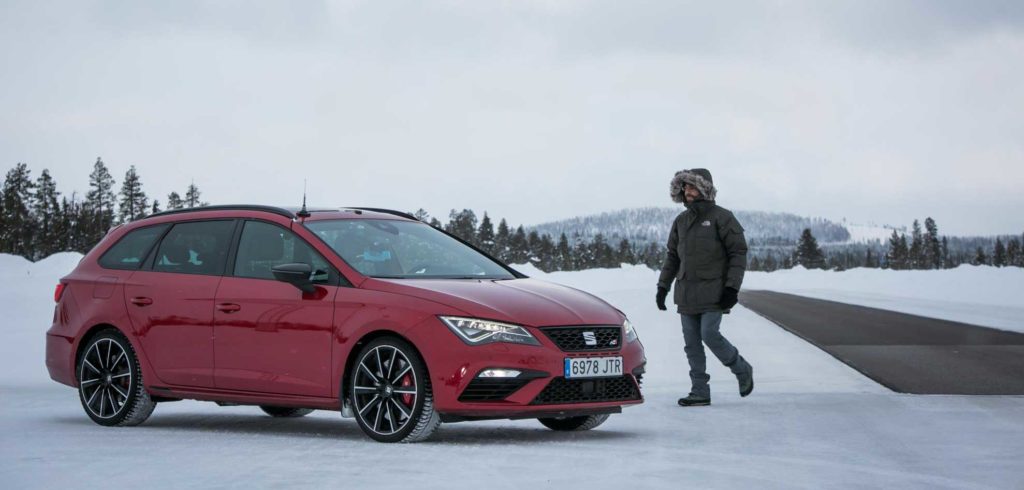It’s 7am at a location near the Arctic Circle. Gonzalo Giménez, head of brakes and active safety systems at Seat, checks the weather forecast in the hope that it will at least be sunny for the day ahead as the outside temperature is only -25°C. Every year, up to 90 Seat prototypes are taken to the area to test in snow, ice and extreme temperatures. Around 30,000km (18,641 miles) are typically covered. On Gonzalo’s team there are 16 other engineers. Their office for 10 weeks of the year is essentially a 6km2 lake covered in 60cm of ice.
The engineers will carry out up to 60 different tests during their time in Lapland. The first test of the day consists of deactivating the ESC by varying degrees, and then fully. If the vehicle goes off course, they must make sure that the system stabilizes the wheels so it can get back on track.
Ahead is a 200m long track that is half asphalt and half ice for testing high and low grip levels. Gonzalo drives back and forth several times, braking on both surfaces simultaneously to refine the ABS system.
According to Gonzalo, the main change over recent years has been “the way technology has evolved. It has made a difference in both the efficiency of the vehicle’s systems as in the work tools that are available to us, which are increasingly powerful and fast.” When the day is over, engineers analyze the recorded data, and make any adjustments that may be required.
Gonzalo began working in Seat’s Zona Franca facilities in 1992 as soon as he finished his studies. “When I transferred to the technical center, then located in Martorell [Spain], I had the chance to work in various departments, and I chose chassis experimentation. This job requires that you be passionate about cars, willing to travel all the time and know how to adapt to any circumstance.”
Testing starts all over again in the summer. Engineers travel to a desert region for three weeks. They visit all five continents throughout the year to test prototypes in every weather condition and on all types of surfaces.



